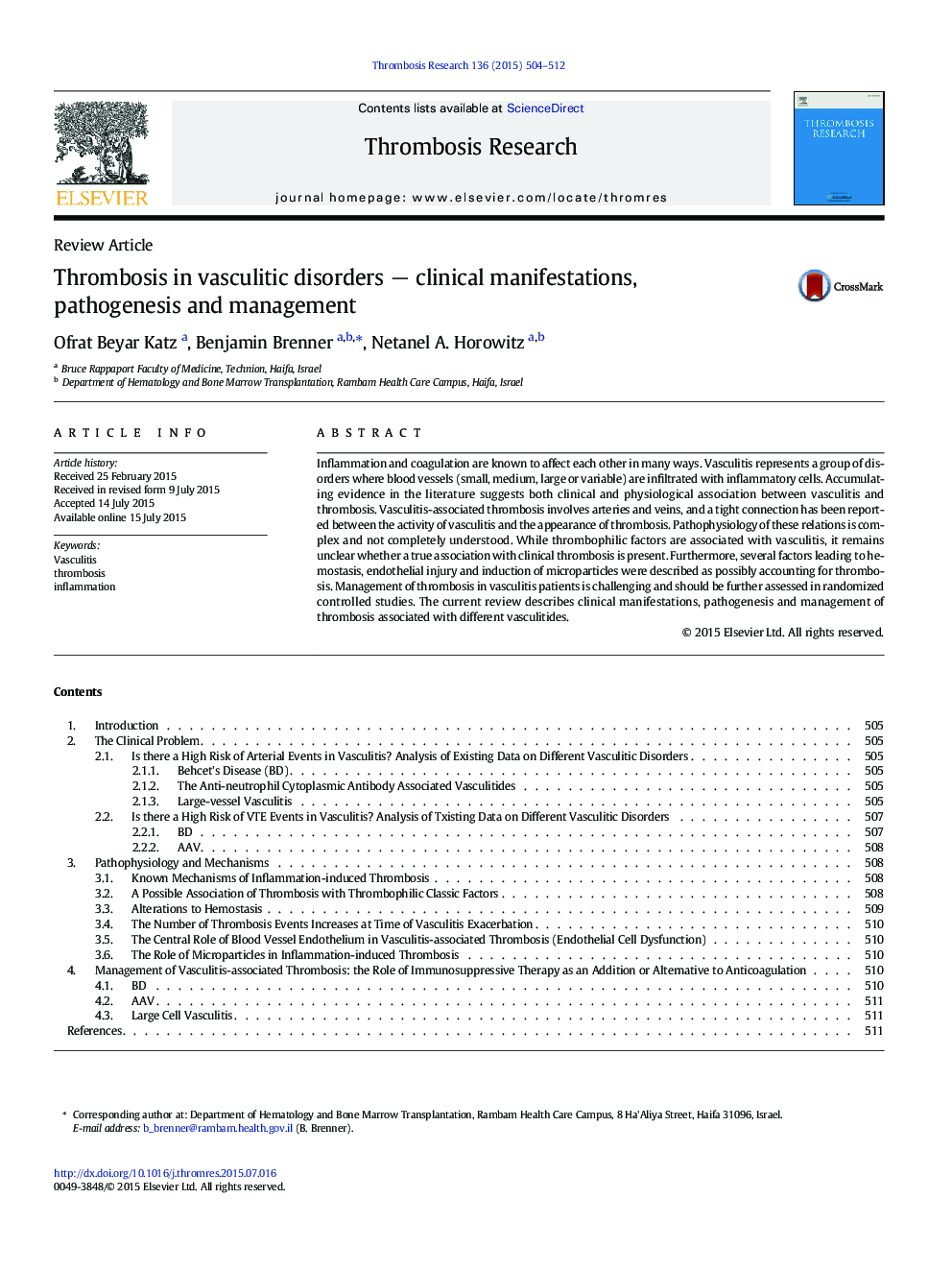| Article ID | Journal | Published Year | Pages | File Type |
|---|---|---|---|---|
| 3027059 | Thrombosis Research | 2015 | 9 Pages |
•In most vasculitides, active disease is associated with increase thrombotic events•The mechanisms responsible for this clinical association are complex and elusive•Immunosuppressive therapy could be used for treatment of thrombotic events•International collaboration is warranted to identify applicable treatment
Inflammation and coagulation are known to affect each other in many ways. Vasculitis represents a group of disorders where blood vessels (small, medium, large or variable) are infiltrated with inflammatory cells. Accumulating evidence in the literature suggests both clinical and physiological association between vasculitis and thrombosis. Vasculitis-associated thrombosis involves arteries and veins, and a tight connection has been reported between the activity of vasculitis and the appearance of thrombosis. Pathophysiology of these relations is complex and not completely understood. While thrombophilic factors are associated with vasculitis, it remains unclear whether a true association with clinical thrombosis is present. Furthermore, several factors leading to hemostasis, endothelial injury and induction of microparticles were described as possibly accounting for thrombosis. Management of thrombosis in vasculitis patients is challenging and should be further assessed in randomized controlled studies. The current review describes clinical manifestations, pathogenesis and management of thrombosis associated with different vasculitides.
